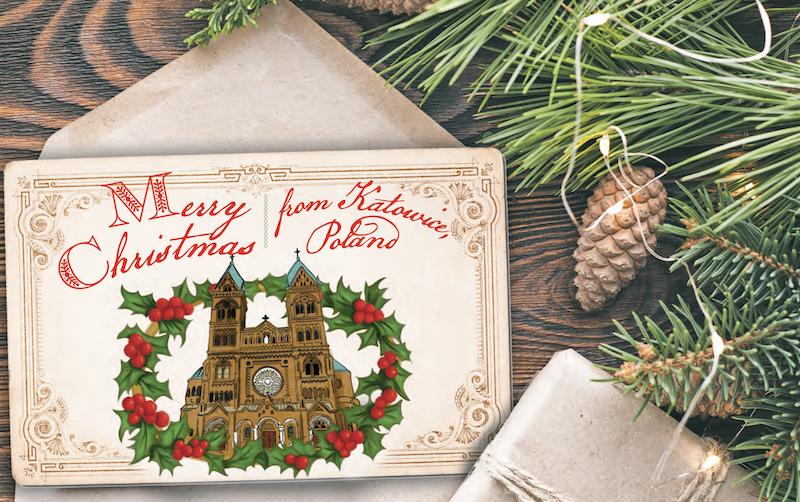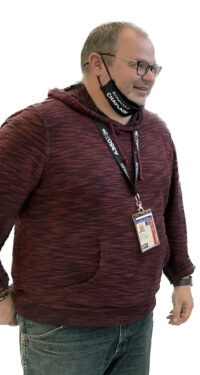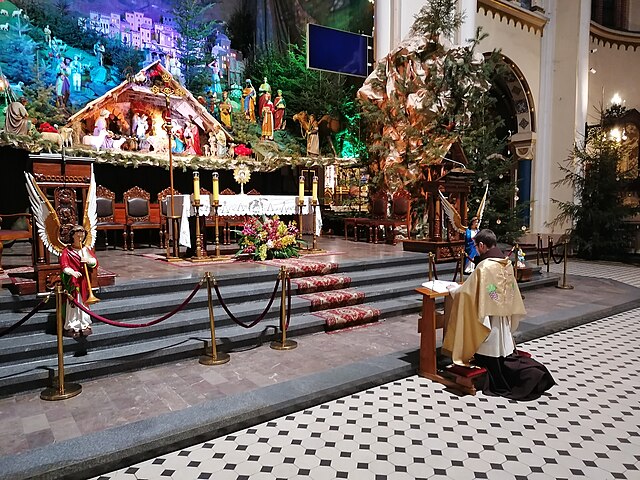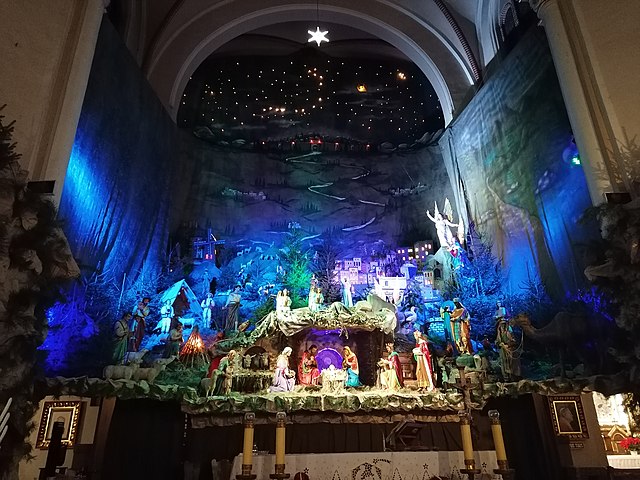
SOUTH JAMAICA — Father Chris Piasta lived under communism growing up in Katowice, Poland, but unlike other Soviet-bloc countries, Christmas was allowed to flourish at his hometown parish.
St. Louis the King and the Assumption of the Blessed Virgin Mary is a basilica cathedral famous for its massive Nativity scene, which has been called the biggest in Europe.

“It’s actually built all over the altar,” Father Piasta said. “The statues are almost human size. And now, they’ve even expanded sideways to the naves of the church. It’s just incredibly big.”
These days, Father Piasta is pastor of St. Bonaventure-St. Benedict the Moor Parish in South Jamaica.
He said the huge Nativity-scene tradition at his hometown Franciscan parish goes back to its origins in the early 1900s.
But, he noted, the founder of the Franciscan order created the very first Nativity scene in 1223.
“It’s quite interesting that this year is the 800th anniversary since St. Francis of Assisi built the first Nativity scene in the Italian village of Greccio,” Father Piasta said.
St. Louis the King and the Assumption of the Blessed Virgin Mary parish has since grown to about 30,000 members, Father Piasta said. In his youth, it had no Catholic school, but its leaders made sure the children had much to do at Christmas.
He recalled a special Mass held for kids each weekday morning during Advent. The church was kept dark and everyone entered with some sort of light, like a lantern.
“It was early in the morning, like around 6 a.m.,” he recalled. “And the Mass was being said in darkness. The only light was from those lanterns.”
After each Mass, the children received simple paper gifts like trading cards depicting a member of the Holy Family, the Magi, or an animal in the stable.
The idea was to collect enough pieces to form a single Nativity scene.
“As a kid, there was nothing better,” he said. “All the kids were excited about Christmas.”

Father Piasta explained that Katowice is in Silesia — an historic region of Central Europe.
Poland and Germany have both claimed Silesia, as their borders shifted during 20th-century warfare. Most of it became part of southern Poland after World War II.
And then Poland fell under communist rule during the Cold War.
Still, Poland avoided widespread suppression of religion, unlike other countries aligned with the former Soviet Union, in part because Pope John Paul II was Polish, Father Piasta said.
“When JP II became pope in 1978, that complicated the whole situation,” he said. “Statistics were pointing out that 97% of all Poles were Catholic. So, you couldn’t just change it or forbid it. That wouldn’t work at all.”
Christmas at home, however, was not extravagant for his family, which included his parents, himself, and an older sister.
“Gifts were very simple because people didn’t have much,” Father Piasta said.
Still, he fondly remembers receiving his favorite toy cars and fishing bobbers for his tackle box.
Father Piasta said he loved the special mushroom soup his mother made for Christmas. The main ingredient was the wild mushrooms he hunted with his father, a coal miner, in forests near Katowice.
“I can still taste it,” he said. “Oh, I absolutely loved it.”
Father Piasta also recalled Christmas in Gelsenkirchen, West Germany where some of their Silesian relatives settled.
However, the Polish government would only allow three of the four people in his family to leave the country. One person had to stay behind, according to the government’s rules.
That all changed after the Iron Curtain went down in 1989, and the Soviet Union dissolved in the early 1990s. Poland subsequently swapped communism with a Western-style political system.
Father Piasta’s family could then move without restrictions from Katowice to Gelsenkirchen.
He left home at about age 18 to enter formation to be a priest. He ministered in several countries, but landed in the U.S., where he became a citizen.
Now, his favorite Christmas memory of his hometown parish is not from his youth, but from 2008, although it began with sadness.
“My mother,” he recalled, “went to see her doctor and she said, ‘Wouldn’t that be nice if the whole family came for Christmas this time?’ And they did — because of her funeral.
“She just collapsed, and that was the end of it.”
The funeral Mass, celebrated by Father Piasta, was on Christmas Eve at the basilica. The winter weather was overcast and depressing, he said.
But then a ray of sunlight beamed through the stained-glass rosetta at the back of the church.
“And it landed exactly on the coffin of my mom,” Father Piasta said. “It lasted for two or three minutes. I thought, ‘Okay, I get the message.’
“To me, it was all the proof I needed that she was in the right place. It makes me happy when I think of it.
“And that’s the real Christmas story for me.”
Editor’s note: This is the third in a series of six articles where priests in the diocese who come from other countries reflect on their boyhood parishes and hometowns at Christmas.

